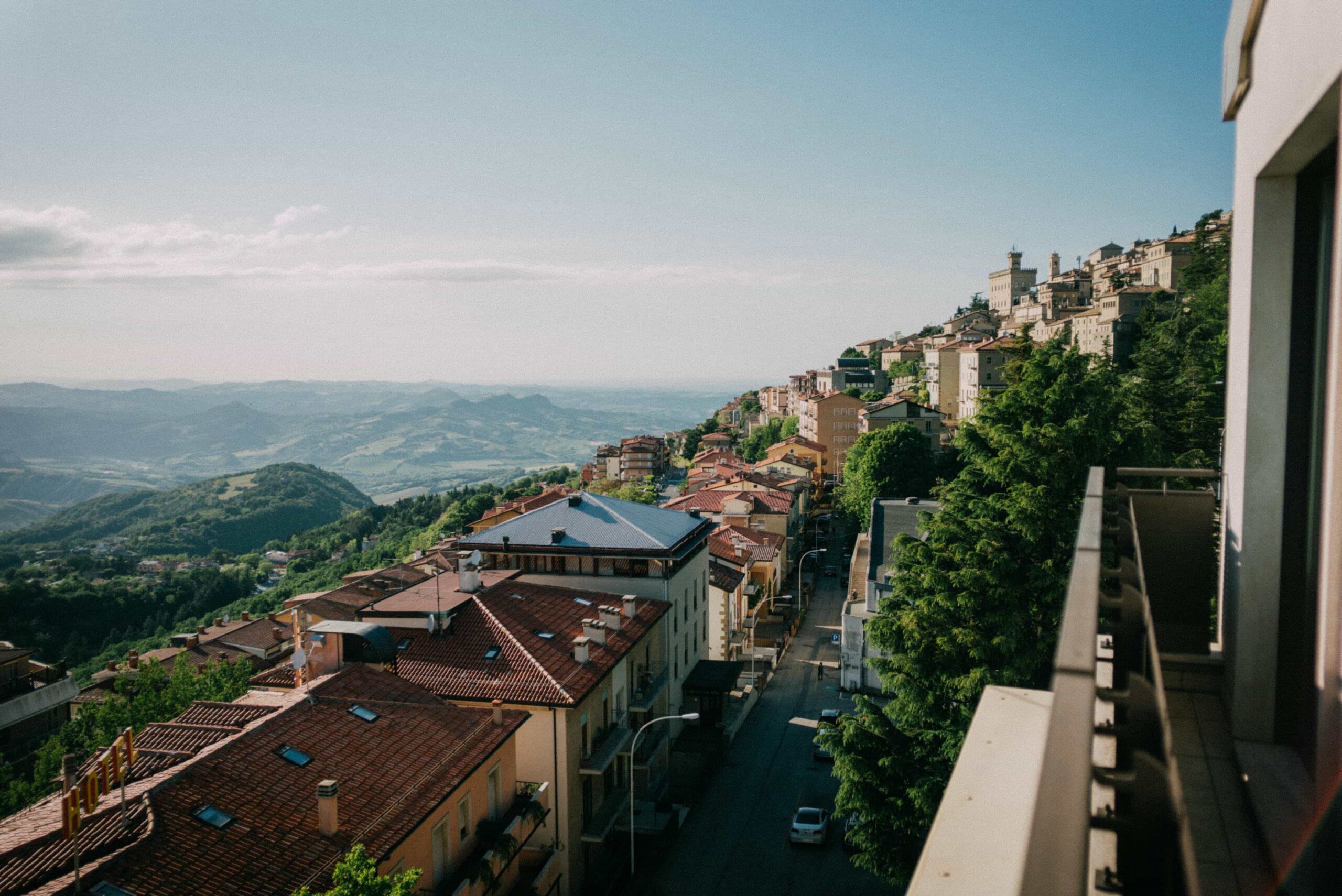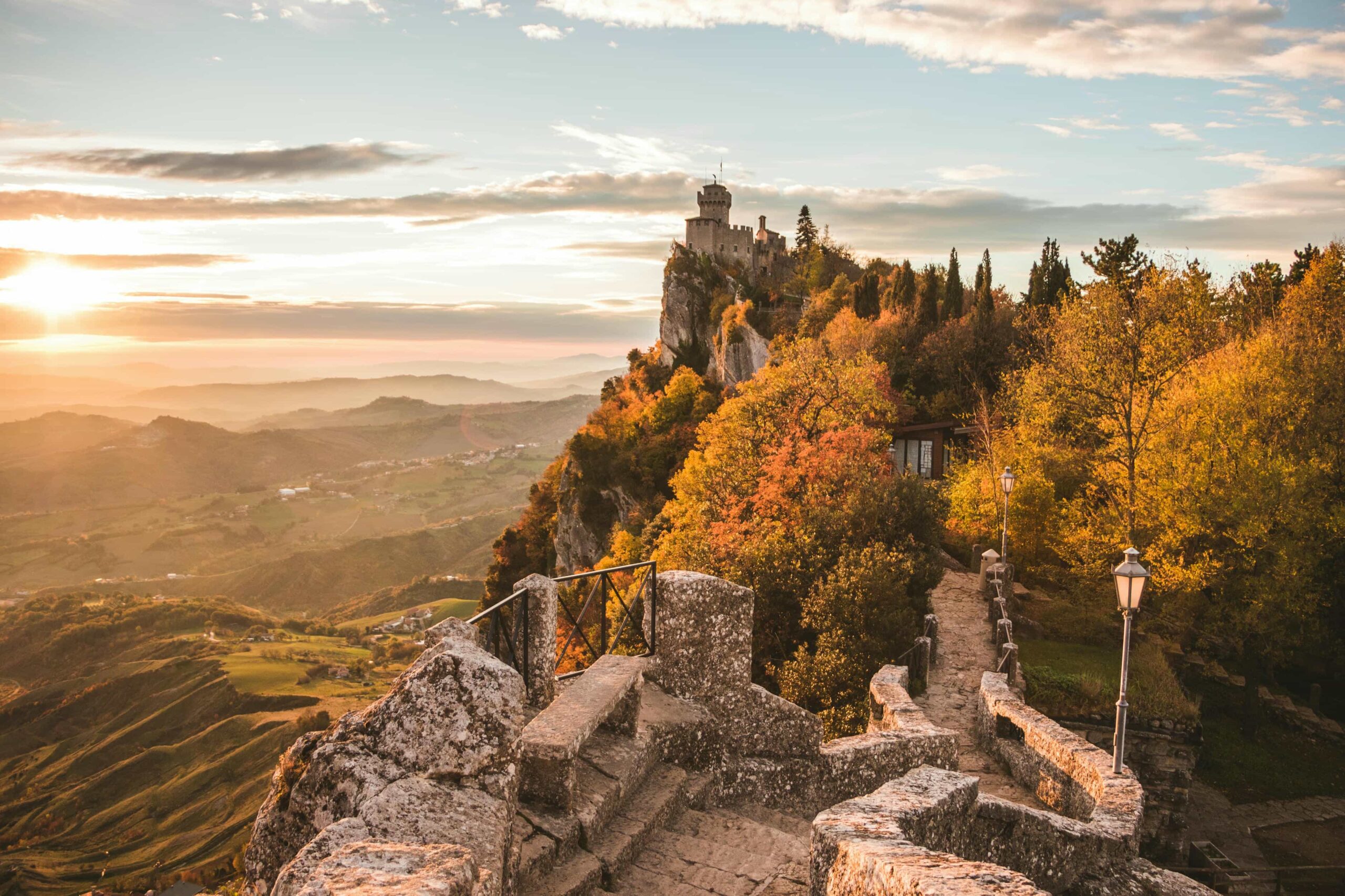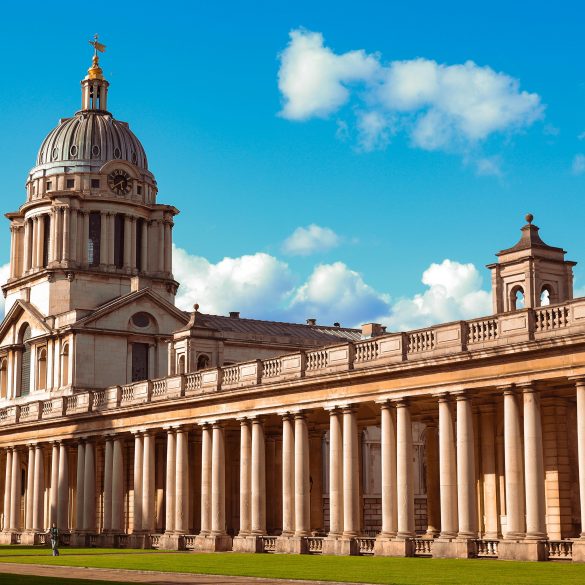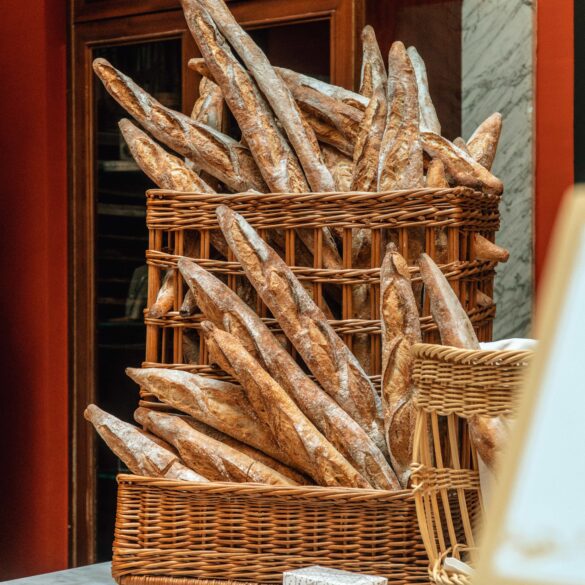San Marino Travel Guide: Discovering Europe’s Hidden Mountain Republic
Standing on the ancient walls of San Marino, watching the sunrise paint the Adriatic coastline in golden hues—honestly, it’s one of those moments that makes you question why this tiny republic isn’t on every traveler’s bucket list. Having visited San Marino four times over the past decade, I can confidently say it’s become one of my favorite European gems, and here’s the thing that really strikes me: most people have never even heard of it.
San Marino isn’t just another Italian hill town (though technically, it’s completely surrounded by Italy). It’s the world’s oldest surviving republic1, a UNESCO World Heritage site2, and quite frankly, one of the most underrated destinations I’ve encountered in my fifteen years of travel writing. What really gets me excited about this place? You can literally walk across the entire country in about an hour—seriously.
San Marino Quick Facts
Official Name: Republic of San Marino (Serenissima Repubblica di San Marino)
Size: 61 square kilometers (24 square miles) – roughly 1/8 the size of New York City
Population: Approximately 34,000 residents
Capital: City of San Marino
Founded: 301 AD (making it the world’s oldest republic)
Currency: Euro (€)
Languages: Italian (official), Romagnol dialect commonly spoken
Let me be completely honest—when I first planned a trip to San Marino back in 2014, I’ll admit I was slightly skeptical. A country smaller than most cities? How much could there really be to see? That skepticism lasted exactly until I stepped off the bus in the historic center and found myself transported into what felt like a medieval fairy tale, complete with fortress towers perched impossibly on clifftops.
The beauty of San Marino lies not just in its postcard-perfect medieval architecture or its breathtaking panoramic views—though trust me, both are absolutely spectacular. What really captivates me is how this tiny nation has managed to preserve its independence and unique identity for over 1,700 years3. Walking through its narrow cobblestone streets, you’re literally stepping through centuries of European history.
This comprehensive guide draws from my multiple visits, extensive research, and conversations with local residents and tourism officials. Whether you’re planning a day trip from Italy or considering San Marino as part of a broader Mediterranean adventure, I’ll share everything you need to know to make the most of your time in this remarkable mountain republic.
Planning Your San Marino Adventure: When, How, and What to Expect
Here’s what I wish someone had told me before my first visit: San Marino is incredibly accessible, but the experience varies dramatically depending on when and how you visit. Having made the mistake of arriving during peak August heat (not recommended!), I’ve learned a thing or two about timing.
The Sweet Spot: Best Times to Visit
Honestly, I’m partial to late spring and early autumn for San Marino visits. May through June and September through early October offer that perfect combination of comfortable weather, manageable crowds, and—this is important—clear visibility for those jaw-dropping views4.
| Season | Weather | Crowds | Best For |
|---|---|---|---|
| Spring (Mar-May) | 15-22°C, occasional rain | Light to moderate | Photography, hiking |
| Summer (Jun-Aug) | 25-30°C, can be humid | Heavy (especially July-Aug) | Festivals, extended daylight |
| Autumn (Sep-Nov) | 18-25°C, crisp and clear | Light | Views, cultural experiences |
| Winter (Dec-Feb) | 5-12°C, foggy periods | Very light | Christmas markets, solitude |
I have to say, my favorite visit was in September 2019. The summer crowds had thinned, the light was absolutely magical for photography, and—here’s a pro tip—the local restaurants had just started featuring their autumn specialties5.
Getting There: Your Transportation Options
Let me be upfront about this: San Marino doesn’t have its own airport or train station. But honestly? That’s part of its charm. The journey to get there becomes part of the adventure.
Most Popular Route: Via Rimini
The most straightforward approach is flying into Federico Fellini International Airport in Rimini, Italy (just 27 kilometers away), then taking the direct bus service. Bonelli Bus operates regular services between Rimini and San Marino6, and the journey takes about 45 minutes through gorgeous Italian countryside.
What struck me during my first bus ride was how the landscape gradually transforms from coastal plains to rolling hills, then suddenly—there it is—this medieval fortress rising dramatically from Mount Titano. Actually, let me revise that: it’s not just dramatic, it’s genuinely breathtaking.
- From Bologna: 2-hour drive via A14 motorway, or train to Rimini then bus
- From Florence: 3.5-hour drive through stunning Tuscan and Emilian countryside
- From Rome: 4-hour drive or train to Rimini (3 hours) then bus
- From Venice: 4-hour drive, or train to Rimini then bus connection
“San Marino’s accessibility is one of its greatest strengths. You can easily combine it with visits to Italy’s Adriatic coast, Tuscany, or even the Vatican—it’s perfectly positioned for multi-destination itineraries.” Marco Valentini, San Marino Tourism Board
A word of caution based on my experience: if you’re driving, parking in the historic center can be challenging during peak season. The cable car system from Borgo Maggiore (where parking is more abundant) up to the old town is not only practical but offers spectacular views7. Plus, there’s something undeniably romantic about ascending to this ancient republic via cable car.
Budget Planning: What to Expect
Here’s where San Marino really surprised me—it’s significantly more affordable than I initially expected, especially compared to similar UNESCO World Heritage sites. That said, costs can vary quite dramatically depending on your choices.
Based on my experiences and current 2024 pricing8, here’s a realistic budget breakdown for a day visit:
- Transportation from Rimini: €5-10 return bus ticket
- Cable car (if needed): €4.50 return
- Museum entries: €15-25 for combined tickets
- Lunch: €25-45 for local restaurants, €10-15 for casual dining
- Souvenirs: €20-50 (stamps and coins are popular)

Experiences That Will Stay With You: San Marino’s Must-See Attractions
Look, I’ll be completely honest—when people ask me what makes San Marino special, I sometimes struggle to put it into words. It’s not just about the attractions themselves, though they’re undeniably impressive. It’s about the feeling of standing in a place where history isn’t just preserved—it’s still living and breathing around you.
The Three Towers: Icons of Independence
The Tre Torri (Three Towers) aren’t just San Marino’s most recognizable landmarks—they’re symbols of resilience that have watched over this republic for nearly a millennium9. Each tower tells its own story, and honestly, visiting all three should be non-negotiable on your San Marino itinerary.
Guaita (First Tower): Built in the 11th century, this is where most visitors start, and for good reason. The views from Guaita are absolutely spectacular—on clear days, you can see all the way to the Adriatic Sea. What really gets me every time is standing in the ancient courtyard and imagining the countless generations who’ve stood in this exact spot, defending their freedom.
Cesta (Second Tower): Perched on the highest point of Mount Titano, Cesta houses the Museum of Ancient Weapons. I’ll admit, I’m not typically a weapons enthusiast, but the collection here is genuinely fascinating10. Plus, the tower itself offers the most dramatic photo opportunities—you know, those Instagram-worthy shots that make your friends immediately start planning their own trips.
Montale (Third Tower): The smallest and most secluded tower. Here’s where I made a discovery during my third visit: it’s the perfect spot for quiet reflection away from the crowds. The path connecting all three towers is well-maintained and offers constantly changing perspectives of the surrounding landscape.
Pro Tip: The Perfect Tower-Hopping Strategy
Start early morning at Guaita for the best light and fewer crowds, work your way to Cesta by mid-morning, then save Montale for a peaceful late afternoon visit. The entire circuit takes about 3-4 hours with proper exploration time.
Beyond the Towers: Cultural Gems and Hidden Treasures
Here’s what I discovered during my most recent visit in autumn 2023: San Marino’s cultural richness extends far beyond its famous towers. The Palazzo Pubblico (Government Palace) offers guided tours that provide genuine insights into how this tiny democracy actually functions11. Watching the changing of the guard ceremony—it happens several times daily during tourist season—gave me goosebumps. These aren’t actors; they’re actual guards of an actual sovereign nation.
The State Museum houses collections that span from Neolithic artifacts to contemporary art. What struck me most was how the exhibits tell the story of San Marino’s unique position in European history. The museum does an excellent job explaining how this tiny republic managed to maintain its independence through wars, invasions, and political upheavals that reshaped the entire continent.
“San Marino represents something increasingly rare in our modern world—continuity. Our traditions aren’t museum pieces; they’re living practices that connect us to our past while guiding our future.” Captain Regent Alessandro Cardelli, 2023 interview
Don’t miss the Basilica di San Marino, where the remains of Saint Marinus (the founder) are preserved. The neoclassical architecture is beautiful, certainly, but what really moved me was the sense of pilgrimage—people still come here from around the world to pay respects to the saint who established this refuge for freedom12.
Culinary Adventures: Tasting San Marino
Now we’re getting to one of my favorite topics—the food. San Marino’s cuisine reflects its unique position between Italian regions, with influences from both Emilia-Romagna and the Marche. The result? A distinctive culinary identity that’s somehow both familiar and refreshingly different.
- Torta Tre Monti: The national dessert, layers of wafer and chocolate cream shaped like the three towers. It sounds touristy, I know, but it’s genuinely delicious.
- Bustrengo: A traditional cake made with breadcrumbs, apples, and various dried fruits. Perfect with local wine.
- Local wines: San Marino produces excellent Sangiovese and Biancale varieties. The wine tasting experiences here are intimate and educational.
Ristorante Righi has been my go-to recommendation since 2016—family-run, authentic, and the pasta is made fresh daily. But honestly, I’ve never had a genuinely bad meal in San Marino. The secret? Most restaurants source ingredients locally, and with such a small territory, “local” means extremely fresh13.
Shopping and Souvenirs: More Than Tourist Trinkets
Here’s something interesting that most guidebooks don’t mention: San Marino is actually a duty-free haven. Electronics, perfumes, and luxury goods can be significantly cheaper here than in surrounding Italy14. But honestly? The most meaningful souvenirs are uniquely Sammarinese.
The postal stamps are legendary among collectors worldwide. San Marino has been issuing its own stamps since 1877, and the designs are often stunning works of art. I’m not a stamp collector by nature, but I started buying San Marino issues as gifts—they’re genuinely appreciated by recipients.
The coin collecting opportunities are equally impressive. As a eurozone member, San Marino issues its own euro coins with unique designs. The €2 commemorative coins, in particular, are beautiful and retain their monetary value while potentially appreciating over time.
Essential Tips for the Modern San Marino Traveler
After multiple visits and countless conversations with fellow travelers, I’ve compiled what I consider the most valuable practical advice for making your San Marino experience smooth and memorable. Some of these insights come from mistakes I made—so you don’t have to repeat them.
Accessibility and Inclusive Travel
Let me address something that’s often overlooked in travel guides: San Marino’s accessibility for travelers with mobility challenges. The historic center involves considerable walking on uneven cobblestones and steep inclines. However, the cable car system makes the main attractions accessible, and several viewpoints can be reached without extensive walking15.
The modern visitor center provides excellent facilities and detailed accessibility information. What impressed me during my 2023 visit was how staff proactively offered assistance and alternative routes for visitors with specific needs. It’s clear that San Marino takes inclusive tourism seriously.
Safety and Security: What You Need to Know
San Marino boasts one of the lowest crime rates globally. During all my visits, I’ve never encountered any safety concerns beyond the usual precautions for tourist areas. The local police are friendly and speak multiple languages. Emergency services are coordinated with Italy, ensuring comprehensive coverage despite the country’s small size16.
Sustainable Tourism: Traveling Responsibly
Here’s something I’ve become increasingly passionate about: San Marino is leading by example in sustainable tourism practices. The country has implemented several initiatives that balance preservation with visitor access, and frankly, other destinations could learn from their approach17.
The public transportation connections reduce the need for private vehicles. The cable car system isn’t just convenient—it’s environmentally conscious. Most hotels and restaurants have adopted green practices, from energy-efficient lighting to locally-sourced menus.
As visitors, we can contribute by:
- Using public transportation and the cable car system
- Supporting local businesses and restaurants
- Respecting heritage sites and following designated pathways
- Participating in cultural activities rather than just sightseeing
Technology and Connectivity
San Marino offers excellent mobile connectivity and free Wi-Fi in most public areas. The country uses Italian telecom infrastructure, so EU roaming policies apply. For photography enthusiasts—and honestly, who isn’t when visiting San Marino—the lighting conditions can be challenging due to the elevation and medieval architecture. I always recommend bringing a polarizing filter for outdoor shots.
“San Marino represents the perfect balance between preserving our heritage and embracing modernity. We want visitors to have world-class experiences while respecting the intimate scale that makes us special.” Director Elena Balsimelli, San Marino Tourism Authority
Why San Marino Deserves a Place on Your Travel List
As I wrap up this comprehensive guide, I keep coming back to the same realization: San Marino offers something increasingly rare in our connected world—genuine uniqueness. This isn’t manufactured uniqueness designed for tourism; it’s authentic distinctiveness born from 1,700+ years of determined independence.
Every time I visit, I discover something new. Maybe it’s a hidden viewpoint, a local festival, or simply a conversation with a resident who helps me understand this remarkable place a little better. San Marino rewards curiosity and punishes rushed visits.
My recommendation? Plan for at least a full day, preferably with an overnight stay. The evening hours, when day-trippers have departed, reveal San Marino’s most magical character. The sunset views from the towers are genuinely unforgettable, and the restaurants serve their best dishes to smaller, more intimate crowds.
San Marino proves that size doesn’t determine significance. In our increasingly homogenized world, places like this remind us why diversity—cultural, political, and historical—matters. Whether you’re a history enthusiast, photography lover, or simply someone seeking authentic experiences, San Marino delivers on multiple levels.
Start planning your visit. Trust me on this one—you won’t regret discovering Europe’s best-kept secret.
References and Sources



